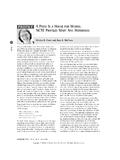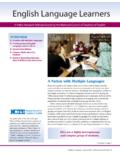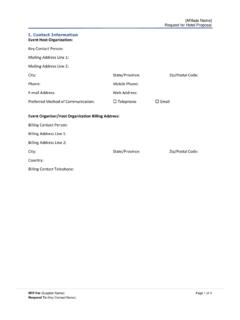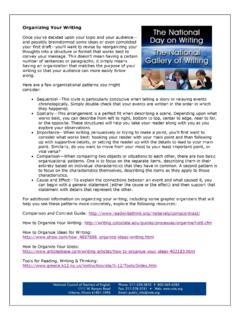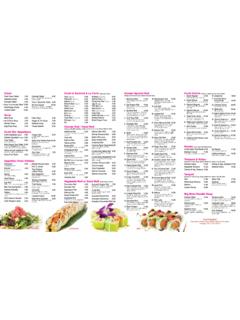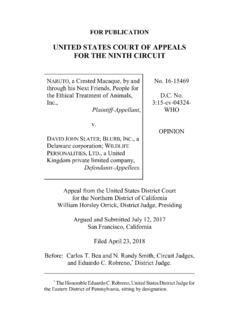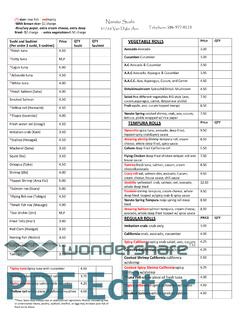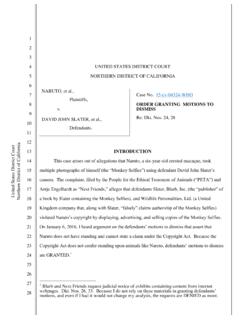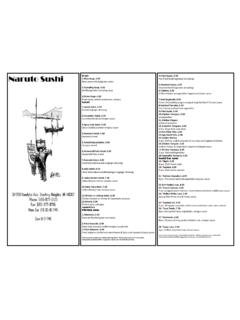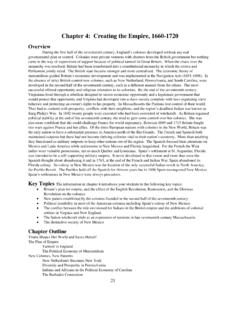Transcription of Manga and the Autistic Mind O - NCTE
1 60 Robert RozemaThe author examines how Manga reveals the way individuals with ASD process the world, and explores how Manga can serve as a teaching tool for neurotypical and neurodivergent and the Autistic MindOmanga reveal about the way adolescents with ASD view and process the world around them? How can Manga be used as a teaching tool in classrooms with both neurotypical and neurodivergent students?Reading Manga through the SpectrumWhatever insights Manga can provide into the ad-olescent with ASD, however, should be tempered by a favorite saying within the autism community: If you know one child with autism, you know one child with autism. Like other neurodevelopmen-tal disorders, in other words, autism expresses it-self differently in different individuals. There is no single Autistic mind , brain, or point of view. And while research grows ever closer to identify-ing genetic and biological factors that might pre-dict autism, the reality is that right now, we know autism only through the symptoms exhibited by affected individuals.
2 These symptoms vary widely, so that one adolescent with ASD may demonstrate easily recognizable Autistic traits, such as severely impaired verbal skills and repetitive twirling or hand- flapping, while a classmate with ASD may be almost indistinguishable from his or her neurotyp-ical peers. Most people are surprised to learn, for instance, that my son is Autistic . To them, he talks and acts nothing like Raymond from Rain Man, the most enduring pop- culture portrayal of remedy some of the uncertainty surround-ing autism, the 2013 Diagnostic and Statistical Manual of Mental Disorders (DSM- 5) removed the diagnosis of Asperger s syndrome long considered f its millions of readers worldwide, Manga , or Japanese comics, seems to hold a special appeal for adoles-cents with Autism Spectrum Disor-der (ASD). If you have a student with ASD in your English language arts classroom, chances are he or she reads Manga : the latest issues of Bleach, One Piece, Skip Beat, or Attack on Titan are all popular ti-tles with adolescents in both Japan and the United States.
3 Why individuals with ASD love Manga and its animated cousin, anime remains mostly unexplored, though their preference is discussed on ASD message boards and Facebook pages, recog-nized by practicing psychologists and social work-ers, mentioned in journalistic memoirs concerned with the disorder, and noted by renowned Autistic Temple Grandin in her 2013 NCTE Annual Con-vention keynote the 2014 finding by the Centers for Disease Control that an astounding 1 in 68 chil-dren are on the autism spectrum it seems more important than ever to examine the literacy prac-tices of this increasingly present but still misunder-stood group. Your classroom likely has at least one student who is on the spectrum, and perhaps more who have gone undiagnosed or undetected. They are likely boys, who are diagnosed with ASD at a rate five times higher than girls. This group includes my son, who was diagnosed with high- functioning au-tism three years ago and is heading toward adoles-cence all too quickly.
4 If many of these young adults are reading Manga , it is critical for English teachers to ask two questions: What does the preference for English Journal (2015): 60 608/24/15 6:54 PM61 English JournalRobert Rozemaa distinct, milder form of the disorder in favor of the more inclusive term Autism Spectrum Dis-order, which now encompasses the entire range of the disability. The reformulated DSM- 5 definition includes only two broad diagnostic criteria for au-tism: first, persistent deficits in social communica-tion; and second, restricted, repetitive patterns of behavior, interests, or activities. It is clear that an obsession with Manga qualifies as a repetitive pat-tern of interest, the second major criterion. But why is this the case?At the most basic level, Manga may appeal to adolescents with ASD simply because it is an image- rich medium, and many Autistic individ-uals are better at processing images than words.
5 As Temple Grandin observes in The Autistic Brain: Thinking Across the Spectrum, they are visual think-ers (Grandin and Panek 28). Not all adolescents with ASD in your class will possess exceptional vi-suospatial skills like Grandin, who can reproduce complicated architectural structures from memory, but research has shown that many will pay more attention to small visual details than will their neurotypical peers, sometimes at the cost of the larger picture (Dakin and Frith 500). As a medium, Manga typically contains fewer words and more pictures than Western comics. Aarnoud Rommens notes, The amount of wordless passages in any volume of Manga may be striking to the Western eye. To read Manga is to read images the rhythm is determined by the sequence of images .. In most cases, this means that the image alone conveys narrative information. The spare use of narrative captions and word bubbles in Manga , combined with its reliance on picture- specific storytelling, then, may be the main reason it hooks visually ori-ented adolescents with ASD.
6 Adding to this appeal, Manga often features highly detailed, photorealistic illustrations of buildings and landscapes, employed as backgrounds or as stand- alone, scene- setting panels. The celebrated series A Distant Neighborhood by Jiro Taniguchi, for example, includes exquisite renderings of trains and train stations that adoles-cents with ASD may find appealing to visual thinkers, the unique aesthetics of Manga may also provide ad-olescents with ASD with unambiguous social and emotional input, primarily through its exaggerated, stereotypical depiction of the human face. For many individuals with autism, the inability to recognize faces, differentiate between them, and identify fa-cial expressions severely impairs social interaction (Behrmann, Thomas, and Humphreys 258). The DSM- 5 calls this a deficits in nonverbal commu-nicative behaviors .. in understanding and use of gestures. John Elder Robison recounts this diffi-culty in his 2012 memoir Be Different: My Adven-tures with Asperger s:As I got older, I encountered a steady stream of people who d make faces at me and expect some kind of response.
7 People would approach me with big smiles and a hand held out. Who were they? What did they want? They often looked offended when I just stared, and things really got strange if I turned and ran. (80)Individuals with autism can improve their ability to recognize faces and facial expressions through social therapy, which my son receives weekly, and increasingly, with the help of computer technologies (el Kaliouby, Picard, and Baron- Cohen 230). But Manga may also help adolescents with ASD recognize and discriminate between faces. In modern Manga , faces are usually drawn with enormous eyes, small pointed chins, and extreme hairstyles. Iconic rather than realistic in depiction, Manga faces are the most salient aspect of what Neil Cohn calls Japanese Visual Language (JVL), a set of aesthetic conventions that characterize Japanese com-ics and animation. Cohn observes that in JVL, this style [of rendering faces] is so schematized that often characters faces cannot be distinguished from each other, leading to authors use of other features to allow readers to differen-tiate them (189).
8 As Figure 1 shows, the heroes of sho-nen ( Manga for boys) are very similar in ap-pearance across series, at least in terms of their ste-reotypical facial features, but one may have spiky black hair, like Komuro from High School of the Dead, while another has light blue bangs that fall in his eyes, like Kuroko from Kuroko s Basketball. How At the most basic level, Manga may appeal to adolescents with ASD simply because it is an image-rich medium, and many Autistic individuals are better at processing images than 618/24/15 6:54 PMManga and the Autistic Mind62 September 2015might this help the adolescent with ASD? While faces in Western comics take a variety of forms from Prince Valiant to Peanuts a Manga face always looks like a Manga face, making them easy for ado-lescents with ASD to recognize. At the same time, each bears a simple feature that signifi es, unequiv-ocally, the identity of the character, helping ado-lescents with ASD draw distinctions between may also resonate with individuals with autism because it depicts facial expressions with little ambiguity.
9 In comics, as Scott McCloud observes, faces are critical in evoking emotional responses from the reader. McCloud identifi es six primary emotions that a face can express: anger, disgust, fear, joy, sadness, and surprise. These pri-mary emotions combine to yield more nuanced secondary expressions, so that anger (primary) + sadness (primary) = betrayal (secondary) (83 85). But emotional subtlety is not the goal of most Manga . Indeed, Manga typically caricaturizes Figure Similarity and Difference in Manga Faces. Top row: Eren from Attack on Titan; Kuroko from Kuroko s Basketball. Bottom row: Kumuro from High School of the Dead; naruto from naruto . FIGURE 1. Similarity and Difference in Manga Faces. Top row: Eren from Attack on Titan; Kuroko from Kuroko s Basketball. Bottom row: Kumuro from High School of the Dead; naruto from 628/24/15 6:54 PM63 English JournalRobert Rozemacharacters emotional states: angry characters are drawn in grotesque distortions; sad characters are shown with tears streaming down their cheeks.
10 JVL also relies on a common set of symbols, or eme-nata, to further reinforce the emotional content of a panel (Ingulsrud and Allen 6). Culturally specifi c to Japan, emenata can bewilder Western readers: in Manga , a drop of sweat on the brow of a char-acter represents worry, tension, surprise, or anger; a bloody nose symbolizes sexual arousal. Experi-enced Manga readers recognize and interpret these symbols without thinking, just as Western read-ers know that a dark cloud hovering above Charlie Brown s head means that he is, as usual, a little depressed. When combined in a single portrayal, as when an angry character grimaces horribly (car-icature) and grows horns (emenata), the emotional message is loud and clear, perhaps even to adoles-cents with ASD who typically struggle to interpret the emotional affect of backgrounds and borders, too, can further communicate an emotional context while appealing to another kind of individual with autism the pattern thinker (Grandin and Panek 140).

